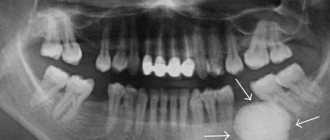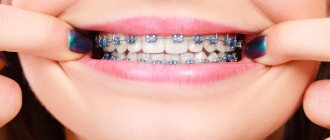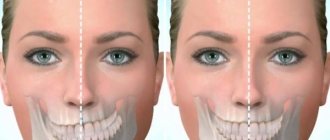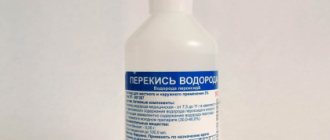Treatment of
jaw
fractures is a characteristic of conservative and surgical treatment methods. Treatment of any injury must begin with first aid. For fractures of the maxilla, it is necessary to restore the prominence and height of the face and recreate the pre-traumatic occlusion. The jawbone is often stable, so treatment is carried out by fixing the upper and lower teeth together. Various options for osteosynthesis of facial bones with titanium mini-plates. When the upper jaw is fractured, its fragments are displaced downward, disrupting the usual relationship of the teeth of the upper and lower jaw and somewhat lengthening the face.
PROVIDING ASSISTANCE FOR FRACTURES OF THE UPPER AND LOWER JAWS
Qualified assistance is provided before admission to a specialized hospital.
When providing qualified surgical care, the surgeon must:
1) anesthetize the fracture site;
2) inject antibiotics into the wound and administer antibiotics internally;
3) carry out simple transport immobilization, for example, apply a standard transport bandage;
4) make sure there is no bleeding from the wound, asphyxia or its threat during transportation;
5) carry out anti-tetanus measures according to the instructions;
6) ensure proper transportation to a specialized medical institution, accompanied by medical personnel (determine the type of transport, the position of the patient);
7) clearly indicate in the accompanying documents everything that was done to the patient.
Patients with complex and complicated facial injuries should be referred to a specialized department if there is a need for primary plastic surgery of soft tissues and the use of the latest methods for treating facial bone fractures, including primary bone grafting.
Temporary (transport) immobilization of fractures of the lower and upper jaw. It is carried out outside a specialized medical institution or at the scene of an incident by paramedics, doctors of other specialties, sometimes in the form of mutual assistance.
For temporary immobilization use:
1) Circular bandage parietal-chin bandage
2) Standard transport bandage
3) Soft chin sling Pomerantseva-Urbanskaya
4) Intermaxillary ligature fastening
Circular bandage parietal-chin bandage.
Circular tours of the bandage, passing through the chin of the lower jaw and parietal bones, do not allow fragments to move during transportation of the victim. For this purpose, you can use a mesh elastic bandage.
Standard transport bandage.
A standard transport bandage consists of a rigid chin sling and a support cap (dimensionless). The latter has 3 pairs of loops for fixing rubber rings, which tightly press the sling to the chin area. Under the loops there are fabric pockets for cotton pads, which allow you to remove the rubber rings from the swollen soft tissues of the face and prevent their injury. The cap is placed in such a way that it tightly covers the occipital protuberance, and its straps are tied on the forehead. A rigid chin sling is made with a cotton-gauze liner so that it covers the edges of the sling along its entire perimeter. This prevents direct contact of the rigid structure with swollen soft tissues, and can also serve as a protective bandage in case of damage to the skin of the chin area. Depending on the number of pairs of rubber rings used in the cast, the sling can hold the fragments without pressure or apply pressure to them. For fractures of the lower jaw behind the dentition or for a fracture of the upper jaw, a standard bandage can be applied using 3 pairs of rubber rings (as a pressure bandage)
In case of fractures of the lower jaw within the dentition, it should be applied only to support the fragments. Excessive pressure on displaced fragments will lead to even greater displacement with the risk of developing asphyxia. However, such a differential approach is only possible in a specialized department where there is a dental surgeon. Non-specialists should be advised to apply a standard transport dressing as support.
Soft chin sling by Pomerantseva-Urbanskaya.
Its chin part is made of several layers of canvas or calico. The intermediate section is represented by two wide elastic bands (haberdashery), which go into the peripheral section of the bandage, made of the same material as the chin part. The latter has lacing, which allows you to adjust the degree of tension of the rubber strips of the sling. This bandage is comfortable for patients, easy to use and provides good fixation of fragments
Efficiency. Professionalism. Mercy
The biggest mistake is to go through pain
If a person falls and feels severe pain, he should first of all call someone for help. Then, if possible, call an ambulance. The victim needs to determine exactly where the pain is localized and try not to move, as they say, “through the pain.” It is a grave mistake to try to get up, endure and walk. The fact is that when walking independently, an ordinary fracture turns into a fracture with displacement and damage to soft tissues, with increased bleeding. If there is a position in which the pain is felt minimally, then you should try to accept it and wait for help.
For those around the victim, the most important thing is to call an ambulance. And then act according to the situation. First, limit any movements that cause pain. On average, an ambulance takes 15-20 minutes to respond to a trauma call. Without causing pain, it is necessary to fix the fracture area. Move the victim from the cold ground, out of the wind, into shelter.
Ankle joint: looking for a board
In the forest, as improvised means, you can use things that are suitable for bandaging - scarves, belts, etc. We fix the location of the damage using a method called “figure eight”. First, in two or three rounds, the foot is bandaged on the boot (skate), then we carefully fix the ankle joint and knee.
A more complex option is that the injured person must be moved from the scene of the incident (river, forest) to the road, where an ambulance can drive up. For such a situation, you will need tires - sticks, boards, branches of any length. We perform the same actions, but the leg is tied to the tire. There is no need to swaddle tightly, the main fixation is to the level of the middle third of the thigh. In this position, a person can be carried on a homemade stretcher (for example, made from skis), or carried on a sled.
Knee: Do not bend
In case of injury in the knee area or subluxation of the joint, the algorithm for assistance is slightly different. You cannot change the position of the injured limb. At the slightest attempt to straighten the knee, the pain intensifies. Therefore, you need to fix your leg in a half-bent state. How to do it? You need to place a board under the knee - a spacer in the form of a house, then bandage it, fixing the ankle and thigh.
Hip joint, thigh: moving is prohibited
The task becomes more difficult. Moving independently if you have a hip joint injury (this is evidenced by local pain in this area) is strictly prohibited. The only exception is if you are alone and your life is at stake.
To limit movements in the hip joint, there is a certain technique: the injured leg is fixed with the healthy one, and the person can control the movements of the injured leg with the healthy leg. If it is necessary to transport the person, the person should be placed on a hard surface or wide cloth.
Second option: we fix the ankle, knee, hip joint in several places with a splint, the length of the impromptu splint is from the level of the foot to the axillary region, if possible, the second splint is from the level of the heel to the shoulder blade.
Spine: fix the head
In this case, everything is simple. The most important thing is to secure your head from accidental movements. You need to place a roll of cotton wool (from the driver's first aid kit) or a regular scarf, rolled into a roller, under your chin and secure with a bandage. You can also immobilize your head by placing boots on the sides of your shoulders and tying them at the level of your forehead and neck.
Hand: the magazine will come in handy
This is perhaps the “easiest” injury to treat. For injuries up to the elbow joint (hand, forearm), you need to take a scarf and secure it around your neck. If there is only a rope, then you need to find something that corresponds to the distance from the fingers to the elbow - for example, any magazine or stack of newspapers, giving them the shape of a trench, place it in the injury area and fix it.
Collarbone: we are afraid of fragments
If the clavicle is fractured, additional injury can be caused by bone fragments. To prevent this from happening, you need to place something relatively hard under your armpit (for example, a scarf roll) and secure your arm with a bandage to your chest or across your neck.
Ribs: breathe with your belly
Not fixed. In this case, only pain relief with medications is used. The victim needs to try to “breathe with his stomach.” If a rib is fractured, a person should not lie down; he should be given a stable sitting position.
Additionally: numb and cool
You can give the victim an analgesic or other drug with an analgesic effect, provided that he can clearly say that he is not allergic to this drug. In addition, it doesn’t hurt to put cold on the area of injury - snow or coolant from a first aid kit - and secure it with a bandage. Cold slows down metabolic processes and capillary bleeding.
INTERDENTAL AND INTERMAXILLARY LIGATURE BINDING:
Requirements for using the method:
1) on each fragment there are at least two adjacent stable teeth and two antagonist teeth;
2) the bandage should not include teeth located in the fracture line, with signs of periodontitis and pulpitis, and having pathological mobility.
Contraindications to the application of intermaxillary ligature bonding:
1) concussion;
2) the possibility of bleeding in the oral cavity;
3) danger of vomiting;
4) transportation of the patient by water or air.
Among the many types of intermaxillary ligature fastening, the following are most often used: simple, figure eight, according to Ivey.
a) simple ligature binding.
With a simple intermaxillary ligature fastening, the end of a ligature wire 5-6 cm long is passed into the interdental space, covers one of the teeth included in the bandage from the lingual side and returns it through the other interdental space to the vestibule of the mouth. On the vestibular side, both ends of the wire are twisted together. The twisted wire tightly wraps around the neck of the tooth. The second ligature is fixed in the same way on the adjacent tooth. These two wires are then twisted together, combining the two teeth into one bandage. A similar bandage is applied to the teeth of the second fragment, then to the antagonist teeth. Having reduced the fragments, they are brought into contact with the teeth of the upper jaw and fixed in this position by twisting the wire extending from the teeth of the lower and upper jaws with each other on each side in turn. The ends of the wire are cut with scissors for cutting metal and bent so that they do not injure the mucous membrane of the cheek and gums.
b) figure eight ligature binding.
When fastening in the form of a figure eight, both ends of a ligature wire 6-8 cm long are passed into the interdental spaces from the vestibular side to the oral side so that the wire covers two teeth included in the bandage at once. Then both ends of the wire are returned to the vestibular side, passing them through the gap between the teeth included in the bandage. In this case, one end is passed over the wire covering the teeth from the vestibular side, and the other - under it. On the vestibular surface, the ends of the wire are twisted together. Then the same bandage is applied to the teeth of the second fragment and the antagonist teeth. As in the previous case, the wire fixed to the teeth of the upper and lower jaws is twisted together. The excess is cut off with scissors.
c) ligature binding according to Ivey
When fastening according to Ivy, a wire 10 cm long is first bent into the form of a hairpin, leaving one end 1-1.5 cm longer than the other. At the end of the “hairpin” a loop with a diameter of about 0.2 mm is formed. To do this, you can use a small piece of aluminum wire, crampon tongs, or tweezers. Both ends of the wire are passed from the vestibular side to the oral side between the teeth included in the bandage. The long end of the wire is returned to the vestibular surface through the interdental space located posterior to the loop and passed through it. The short end is brought out to the vestibular side through the interdental space located anterior to the loop and twisted with the long end. The excess wire is cut off by bending the remaining end about 0.5 cm long so that it does not injure the mucous membrane of the cheek. The same bandage is applied to the teeth of the second fragment, the antagonist teeth. The fragments are reduced and fixed to the teeth of the upper jaw with wire passed through the loops of the ligature bandage on each side.
This method has some advantages over the simple one: it is less traumatic, it allows you to examine the oral cavity without removing the entire structure, but only by cutting off the ligatures connecting the teeth.
Why is teeth splinting necessary?
There are various methods and technologies for splinting. However, they are united by their main function - ensuring the stability of the dentition. Several teeth are attached to each other using structures that provide solidity and prevent changes in the position of any tooth located in such a ligament. In some situations, splinting not only returns functionality to teeth, but also avoids their removal.
Indications
- Splinting teeth for periodontitis. Splinting of mobile teeth is carried out at an advanced stage of periodontitis, when bone tissue atrophy leads to exposure of the neck and loss of stability.
- For jaw injuries and tooth dislocations. It is necessary to ensure the immobility of the tooth/teeth and relieve part of the chewing load.
- Splinting of teeth after bite correction. Retainers are placed on the dentition, which prevent the teeth from returning to their original (abnormal) position.
- Temporary splinting of teeth during invasive operations in the jaw area to prevent changes in the position of the teeth (the procedure is performed in a limited number of cases).
Contraindications
- Periodontitis (inflammation, bleeding, infection in periodontal pockets).
- Poor condition or absence of supporting teeth.
- Caries and its complications.
- Poor oral hygiene.
Teeth splinting technique
Installation of permanent tires made of metal, fiberglass or aramid almost always follows a similar scenario.
- Consultation, determination of indications and contraindications.
- Professional teeth cleaning, etching of enamel with a special solution.
- Forming a groove in the enamel to attach the splint (in some cases this can be avoided).
- Primary fixation of the splint using dental glue.
- Application of composite material.
- Illuminating the composite with an ultraviolet lamp until it hardens.
- Tire grinding.
The splinting procedure for injuries and fractures is carried out under the guidance of a maxillofacial surgeon and differs from the classical technique in the design of the splint and the method of its fixation. Installation of a custom retention tray requires taking impressions.










